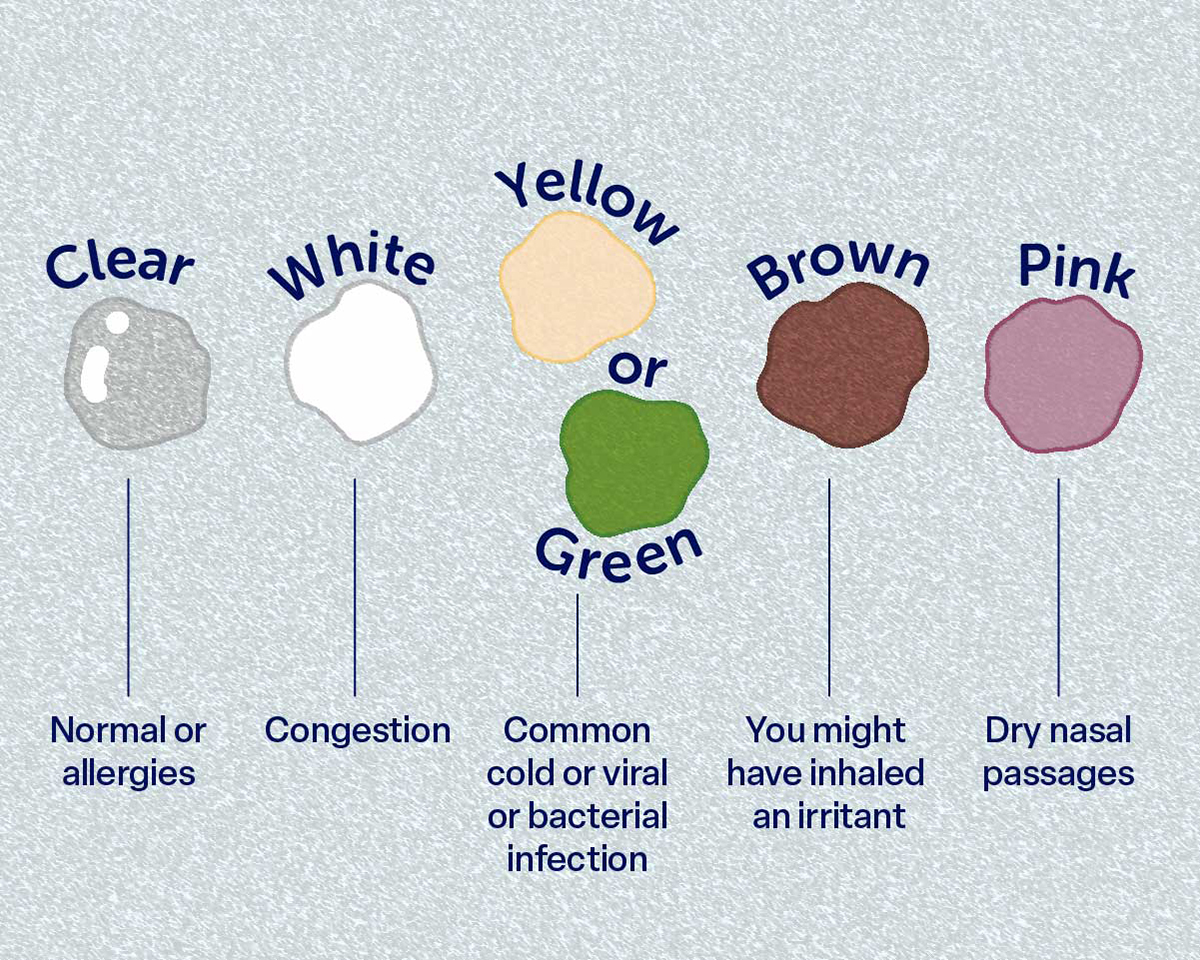Snot 101: Why does your snot change colors — and how you can get rid of it
Like clockwork, two times a year — cold and flu season and allergy season — we get a tingle in our sinuses that can only mean one thing: The snot floodgates are about to open.
For days, weeks or months, depending on the affliction, it can feel like our sinuses are congested and our noses are constantly running. (In the case of small children, the snotty conditions can seem eternal.) But as common as snot is, questions remain. Why does snot change colors? Is yellow or green snot a sign of an infection? When should I see a doctor about snot? And perhaps most important, how can I get rid of this stuff, and fast?
We answer these questions, and more, below.
Mucus is the thin clear substance, made up of mostly water, proteins and antibodies, produced by mucus membranes in the body including your nasal and sinus passages, lungs, stomach, intestines and throat. When it comes out through your sinus passages, we refer to it as snot. When it comes up from the lungs, we refer to it as phlegm. As annoying as it is, mucus plays an important role in the body: It both keeps tissue lubricated and acts as a barrier against viruses and bacteria.
When your nose is stuffy, you might feel like the cause is thicker snot. But even if you can’t feel it, the more likely reason is your nasal passages are swollen and that’s preventing mucus from draining. When something irritates your nasal passages — a virus, bacteria, or even smoke, pet dander or another allergen — the tissue that lines it can become inflamed and swollen. At the same time, if you have an infection from a cold or other illness or an allergy, your body might start producing more or thicker mucus, compounding the miserable effect. If the inflamed tissue prevents mucus from draining, bacteria can start to grow, causing a sinus infection. Sometimes, the mucus will drain down the back of your throat, called a postnasal drip.
An increase in snot, a change in the consistency of snot or a change in the color of snot can signal allergies or an infection. Typically, if you’re experiencing an increase in snot, but it's still thin and clear, you can attribute it to allergies (especially if it’s allergy season and it lasts longer than 10 days). If your snot is suddenly thicker and is changing colors, you might have an infection.
If your snot is clear, it typically means your allergies are flaring up.
If your snot is white, you might have some run-of-the-mill congestion.
If your snot is yellow or green, it could signal that you have a common cold or another viral or bacterial infection such as a sinus infection.
If your snot is brown, you might have inhaled an irritant, such as dust or dirt.
If your snot is pink or reddish, it might mean that your nasal passages are irritated and dry and have started to bleed.

The U.S. Food and Drug Administration (FDA) offers these tips for relieving cold symptoms in infants and children:
Use a cool-mist humidifier, which can help make breathing easier by decreasing congestion in nasal passages. Be sure to use cool mist — a warm-mist humidifier can cause nasal passages to swell and make breathing more difficult.
Try saline nose drops or sprays to moisten nasal passages.
Suctioning with a bulb syringe or a similar product can help remove snot from the nasal passages.
Encourage your child to drink plenty of fluids to help them recover.
The FDA doesn’t recommend over-the-counter medicines for cough and cold symptoms in children younger than 2 years old. Not only are they ineffective, but they could also potentially cause life-threatening side effects.
In addition, for adults, an FDA advisory panel concluded unanimously last year that phenylephrine, a decongestant, works no better than a placebo when taken orally.
If your symptoms have gone on for more than 10 days.
If you have yellow or green snot, a fever and sinus pain, which could be a sign of a bacterial infection.
You have a high fever, even without sinus pain.
You suspect you have a head injury and your nose is bloody.
If your baby’s congestion is causing issues with breastfeeding or drinking from a bottle, you should see their pediatrician.
Do you have other symptoms in addition to a runny nose? Use our symptom checker to determine if you might have a cold, flu or something else.
- Resource
- Resource